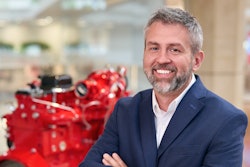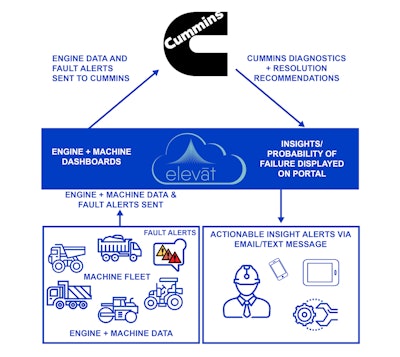
Cummins announced that it is integrating its Cummins Connected Diagnostics application with the Elevāt Machine Connect IoT platform. With this collaboration, Cummins engines that are installed in millions of mobile machines will use Elevāt software to provide real-time recommendations regarding the health of the engines while using the Elevāt platform to monitor the machines’ maintenance, uptime and use. The major benefit is that many original equipment manufacturers (OEMs) can have their own Internet of Things (IoT) machine monitoring solutions.
In a recent interview, I talked with Adam Livesay, founder of Elevāt, and Ed Hopkins, digital solutions business leader for Cummins, about this mutually beneficial partnership. In this Q&A, they discuss why they collaborated, how the partnership benefits OEMs and future opportunities that will improve communications for OEMs and customers.
What prompted this collaboration?
Ed Hopkins: For Cummins, we sell our engines to many different OEMs. So, we were having a meeting with [a customer], one of the largest agriculture OEMs. They sell articulated tractors. Through that discussion, we started asking them about potentially collecting data and then we could come and participate in data collection and even provide some insights. If there's an engine that is unhealthy, could we, Cummins, provide a 24-hour remote monitor?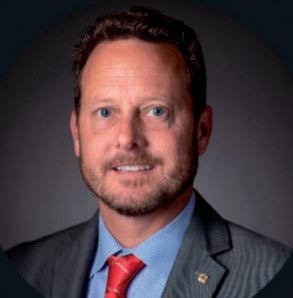 Ed HopkinsCummins Inc.
Ed HopkinsCummins Inc.
What happened was Elevāt. I reached out to Adam [Livesay] to build that relationship. That is where Adam and I got to know each other and started talking about common goal. We quickly crafted a commercial agreement and started talking about all the technical integration.
Adam Livesay: When Ed and I were talking, we came to realization that there are a lot of the OEMs that we work with at Elevāt that are Cummins customers and have been Cummins customers for a long time. We focused on OEMs [that may need a monitoring solution]. We can try to provide them with an IoT and telematics platform that isn't tied into the major component suppliers. A lot of these OEMs can have multiple suppliers, controllers and display screens on their machines. They're competing with larger vehicle OEMs, but they must be innovative. So, we've looked at it as a really nice fit because Cummins is the leader in that market, with those same types of OEMs—off-highway OEMs that are trying to provide new technologies and new innovative solutions. For us, it made a lot of sense. A lot of our customers are asking for similar [IoT solutions] that Ed and the team were talking about, and this collaboration gives Cummins the full flexibility to work with and help them.
When we entered the market six or seven years ago, we really believed that there's going to be an ecosystem of partners out there … a lot more collaboration than we've seen in the past. What was really refreshing from our perspective is, Ed and the Cummins team have taken the same approach. They are collaborating with people like Elevāt and with the OEMs to say, how do we work together? How do we provide you a puzzle piece, so you can provide an elegant solution to the marketplace that's unique to your company and your customers?
How does this collaboration and partnership benefit OEMs?
Ed Hopkins: The challenge with off-highway OEMs is that they frequently use their dealer network to service customers. How often are you going to drive a 40-ton excavator to a shop? You aren’t going to. You're going to ask a dealer to send a mobile technician to a [location] that could be out in the middle of the oil patch or in the middle of a farm. That is very expensive now. The price of fuel is going up. The cost per hour for mobile tech is going up. The mobile technician trucks are close to $300,000 per truck.
However, if we can provide remote monitoring to these important customers, we hope to improve the experience of owning that Cummins engine. Cummins needs to be flexible and realistic and participate where the customer is in that journey. We can't go in and say, “Oh, you have to use a common system to do this.” If we provided a Cummins-only solution, the customer would only see the engine, but there's more than just the engine on the machine. [Elevāt] can monitor everything with its a solution. With that data, we're really hoping to reduce the number of mobile technician trips and hopefully get the information to the right people within a second. A user could have the Cummins recommendation right there at their fingertips in a few seconds. With this, you can fix the issue, or it might not be that critical, so it can be delayed until the next maintenance event to take care of this unhealthy condition.
 Adam LivesayElevāt
Adam LivesayElevāt
[Elevāt] talks with the Cummins database and then provides the recommendations for the fix. This allows us to take what we know, what they know and what that dealer says we need to fix that right away. If the problem can wait for the next service or if service is required, we make sure we're bringing the right components and parts on that trip. I think that insight that we're providing and the massive amount of data that Cummins has and being able to communicate that back to the OEM for their specific machine on their specific work timeline is valuable for the OEM, the dealer and the customer.
Elevāt takes the data and sends the OEM or end user something that's actionable, right? It sends notifications about important events, right?
Adam Livesay: Yeah, absolutely. We allow OEMs to go from big data to smart data. We can track everything everywhere, but that's not necessarily going to be the most viable piece for that OEM. For instance, the service techs might need certain types of information that is important to them. But then the engineering team might need [different] pieces of information that are important to them. So, we allow them to go from that big data set to what's the most intelligent data. The most valuable data is the most valuable pieces of information for our organization.
Ed Hopkins: One thing that we're trying to do with [any customer] is help reduce the capex and opex expenses. Capital expenditure is related to replacing a machine because it's been unhealthy for a while. It gets expensive. If we can help the longevity of these assets, that helps the capex.
The opex is affected if you don't have to call those mobile technicians as often. This collaboration is a real win-win. If a construction company has 20 different OEMs’ equipment, who do they call? Do you call comments? Do you call the OEM?
In some cases, such as with big rental houses, we talk to them, and they get somewhat frustrated when they call a mobile Cummins technician out. And then what? If it's not a Cummins issue, what have you done? You've wasted money. So, what Elevāt’s solution is able to do is identify that this is not a Cummins issue, even though it seems like it, and the operator says, “Hey, there's something wrong with the engine.”
What we're trying to do is get them smart notifications. Our customers don't want to see too much data. You must balance what's in the realm of possible to what is real and actionable.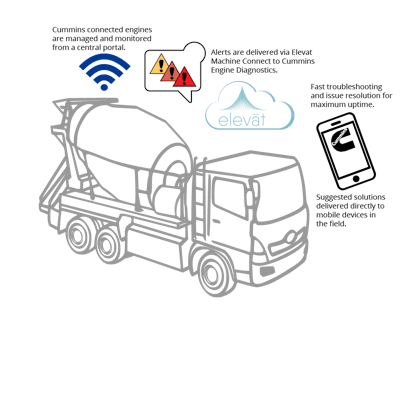 Elevāt
Elevāt
How will this help an operator in the cab?
Adam Livesay: The OEM has the option to take the whole telematics IoT system on the machine and display it inside the cab. If the OEM chooses to take the data and put certain data on the HMI screens, and they could be pieces of information that are warnings, critical [faults], or they could be noncritical. When operators start to get some of these messages, that operator doesn't need to shut down the machine. The idea is that we are sharing information through the whole ecosystem: the operator, the company, the operators working for the dealer network, the OEM network, and Cummins to make sure that we're getting the right information. We're getting certain service calls issued if needed with the right parts to the right people at the right time, live, and making sure that we're trying to have the lowest impact or the highest urgency to get that fixed for that operation.
Ed Hopkins: This initial Phase 1 with Elevāt and Cummins is the remote monitoring capability and giving these notifications, but that's only Phase 1. There are other phases that we are already discussing. In Phase 1, we are pulling data from the machine. We haven't even begun talking about pushing data. What if we can push data from the Cummins server from our engineers to the machine and update that engine? That is another huge benefit. If you have one asset in a construction site that is key to keeping 30 assets running, and it's down, that is a problem. However, we could send data to that engine and update it, and we can keep that construction company happy. So that's another phase that we're working on.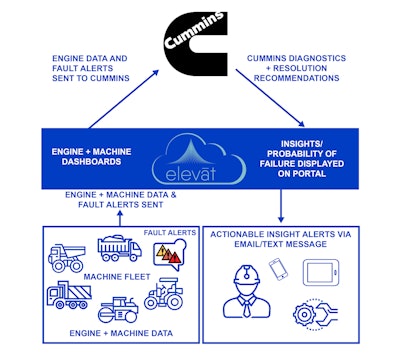 Elevāt
Elevāt
Is there anything else that OEMs should know about this collaboration and how it will help them move their remote monitoring and IoT data forward?
Adam Livesay: For an OEM, working with both Cummins and Elevāt helps mitigate risk. And for new IoT deployment, it really helps guarantee the success of the project. Cummins and Elevāt have both done, hundreds of these things out there, collectively, with different customers. So, this is where we are focused. I think the other thing too, is it's really enhancing the relationship between the OEM their dealer network, and the end customer. And that's the big key here. These types of partnerships are making that relationship and communication so much stronger. That is the exciting piece of this whole thing.
Ed Hopkins: I've been an engineer for about 15 years. I designed a bunch of the products that you see running around. Field testing on-highway big engines and small engines. I know our OEMs have lived with them. I know our markets. My strongest recommendation for an OEM is to pick the correct partner and do your homework because it's a very confusing topic.
The work that Adam is doing with the certification of hardware and the radios, SIM card, telecom, all the harnessing and the ruggedization of the box, and then when you get into the software platform, and all that it's extremely complicated … we know our engines better than anyone. That's where we come in strong. And then Adam and Elevāt come with where they’re strong. So, I'm excited about this because I empathize with our OEMs, especially some of the smaller ones who are wanting to play in this big investment. And I want it to be successful for them. And I want them to be able to compete.





